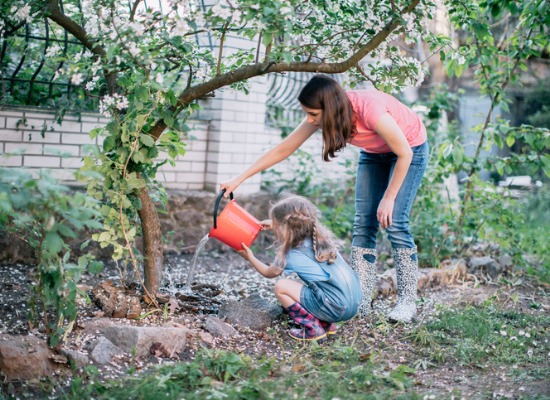TREE EDUCATION

When hot weather persists over an extended period, such as throughout Florida's summer months, landscape trees depend on home and business owners (and their arborists) for water. As high temperatures continue, it's important to use smart irrigation techniques that benefit your trees and help conserve water. Here, our board-certified master arborists offer tips for properly watering your trees in hot weather so they can better absorb and retain moisture when they need it most.
Contact our tree care company today to learn more about our insured tree services for year-round care of all tree types and sizes and to request a free estimate.
The amount of water a tree needs depends on many factors, including the age and species of the tree, water, and soil type. As a general rule, newly established trees have different watering requirements than mature trees. Young trees typically require more frequent watering than older trees, but during extended periods of heat, all ages of trees can benefit from supplemental watering. For the first several months after planting new trees, most of the trees' roots are still within the original root ball, with some roots growing beyond the root ball. The root ball and surrounding soil should remain evenly moist to encourage healthy root growth and establishment.
It can take more than two years of growth for new trees and roots to venture into the soil well beyond the planting hole. After a few months, you might expand the watering zone to cover the entire area under the canopy, or the perimeter of leaves surrounding a tree. New trees may require water as often as three times per week to ensure the root ball doesn't dry out during hot weather, particularly when there is little or no rainfall.
Contrary to popular belief, the health of a tree's roots are not mirrored within its above-ground canopy. In fact, the roots of an established tree may extend well beyond the dripline, or edge of the canopy. While some anchor roots can reach deep into the soil, depending on the tree, most tree roots are generally concentrated in the upper layers of soil. If mother nature doesn't provide adequate rainfall as required for adequate established tree care, the tree's health can suffer. As a result, established trees should be provided with deep, supplemental irrigation to the entire area of soil and ground beneath the tree canopy and extend the watering zone by several feet beyond the drip line. Ideal watering of a mature or well-established tree will moisten the soil to a depth of 10 inches during each irrigation session. In order to help prevent tree rot and tree damage, we don't recommend watering the area directly around the trunk.
There is a simple test you can use to determine whether or not your tree requires irrigation. Insert a long screwdriver with a minimum 6-inch blade into the ground in several locations under the drip line, or the furthest edge or boundary of the tree canopy. If the ground is too firm or you're experiencing difficulty probing the tool to a 6–8-inch depth and natural rainfall is not immediately in the forecast, your tree likely requires supplemental irrigation. But, before you water, it's important to identify the best times of day to water. For most trees, watering in the early morning, late afternoon, or early evening is most effective both for water conservation and for your trees' moisture retention. Watering your trees deeply before high temperatures arrive is ideal. Use a soaker hose to deliver lots of water at a slow pace, allowing the water to sink deep into the soil and reach the tree's roots. It can take time for water to soak in, so soaker hoses should be turned on for a minimum of 30 minutes per session.
Mulching is an underrated and effortlessly simple technique that can save you hours of watering. By shading the soil from intense heat from the sun, mulches help conserve soil moisture, which can reduce the amount of time you have to water your trees significantly. What's more, soil covered with mulch means fewer weeds, preventing trees from competing for moisture. Grass growing under trees can intercept much of the water you provide, so mulching can help you avoid that issue. During seasons with heavy rains, mulches help to slow runoff, and as they break down, they help fortify the soil. We recommend keeping a large, turf-free circle around the trunk (3 feet or more). Add a 2-inch or 3-inch layer of organic mulch within the circle to help conserve moisture and keep weeds at bay. However, avoid piling mulch against the trunk so as to prevent rot!